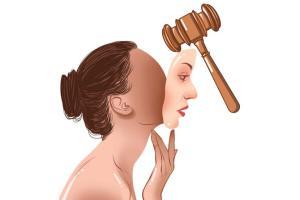When it comes to representation, a real diversity, not a nominal one is key to shifting perspectives. Rather than being stuck on which beauty is real beauty, we may expand that definition, but we could also decentre the value of good looks

Illustration/Uday Mohite
![]() A headline this week brought news of another Bill, but one many people might welcome. The government has proposed amendments to the Drugs and Magic Remedies (Objectionable Advertisements) Act, 1954, to increase penalties—a fine up to R50 lakh and imprisonment up to five years for any advertisements promoting 'magical' or pharmaceutical products that claim to make you fairer, thinner, taller—or claim to cure a particular list of diseases.
A headline this week brought news of another Bill, but one many people might welcome. The government has proposed amendments to the Drugs and Magic Remedies (Objectionable Advertisements) Act, 1954, to increase penalties—a fine up to R50 lakh and imprisonment up to five years for any advertisements promoting 'magical' or pharmaceutical products that claim to make you fairer, thinner, taller—or claim to cure a particular list of diseases.
ADVERTISEMENT
On first look it is a surprise to see something so baked into social attitudes tackled in this way. On closer look you realise that this probably won't apply to fairness creams, soaps and other such cosmetic goods, but rather to their B-grade poor relatives, the late night denizens of shopping networks.
Decades ago, in perhaps the most ingenious and insidious advertising ever, Mills and Boons romances sold in India used to carry a one-page black and white comic for a hair removal cream. They were always about young women hoping for a modern life—a job as a secretary, air hostess or a love marriage to the class dude. But constant disappointment and failure were theirs, due to downy upper lips or hairy arms—hopes dashed by moustache so to speak. Then an upbeat friend recommended said product and presto, they would gleam and glow their way to success, salary and diamond ring. Shopping channel advertisements for dubious panaceas use exactly this script, except with repeated examples, like a vrat katha. Use this tummy belt and like with solah shukrawar, you will get husband, job and foreign travel, just like Sushma, Meera and Lata.
Their rich cousins, the A-list consumer versions of advertising and film, also tell the same story, just more implicitly (posh people like it subtle na), where the happier, richer, more prominent person is always attractive in only one way, establishing the norm which makes us reach for these magic remedies.
In a society where fairness, and appearance generally, is not simply about beauty, but is densely coded shorthand of prejudice about caste, gender, region and class, and causes so much heartache and discrimination, it is a tempting thought to penalise and censor it. But censorship is a ping pong, which does not allow us to change the discussion.
Obviously, when we talk about beauty we want to say that beauty is diverse, that all colours, sizes and shapes can and do potentially figure in the beauty spectrum. But, not being beautiful should not automatically translate to being ugly—and this is harder when much (not all) of body positivity discussions centre around the idea of beauty. Brown or plump or short can be beautiful, but it can also be just brown, plump and short and that should be fine. Why must we be reduced to a Lata vs. Asha, an Ash vs. Sush debate all the time?
When it comes to representation, a real diversity, not a nominal one is key to shifting perspectives. Rather than being stuck on which beauty is real beauty, we may expand that definition, but we could also decentre the value of good looks. We love, befriend and hire people for a host of reasons—because they are convivial or optimistic, efficient, lonesome, smart, loving, wise, good huggers, comedic, adventurous, content, fair-minded, and yes, beautiful too.
More of that, across all identities, might be the magic the doctor ordered.
Paromita Vohra is an award-winning Mumbai-based filmmaker, writer and curator working with fiction and non-fiction. Reach her at paromita.vohra@mid-day.com
Catch up on all the latest Crime, National, International and Hatke news here. Also download the new mid-day Android and iOS apps to get latest updates
 Subscribe today by clicking the link and stay updated with the latest news!" Click here!
Subscribe today by clicking the link and stay updated with the latest news!" Click here!






